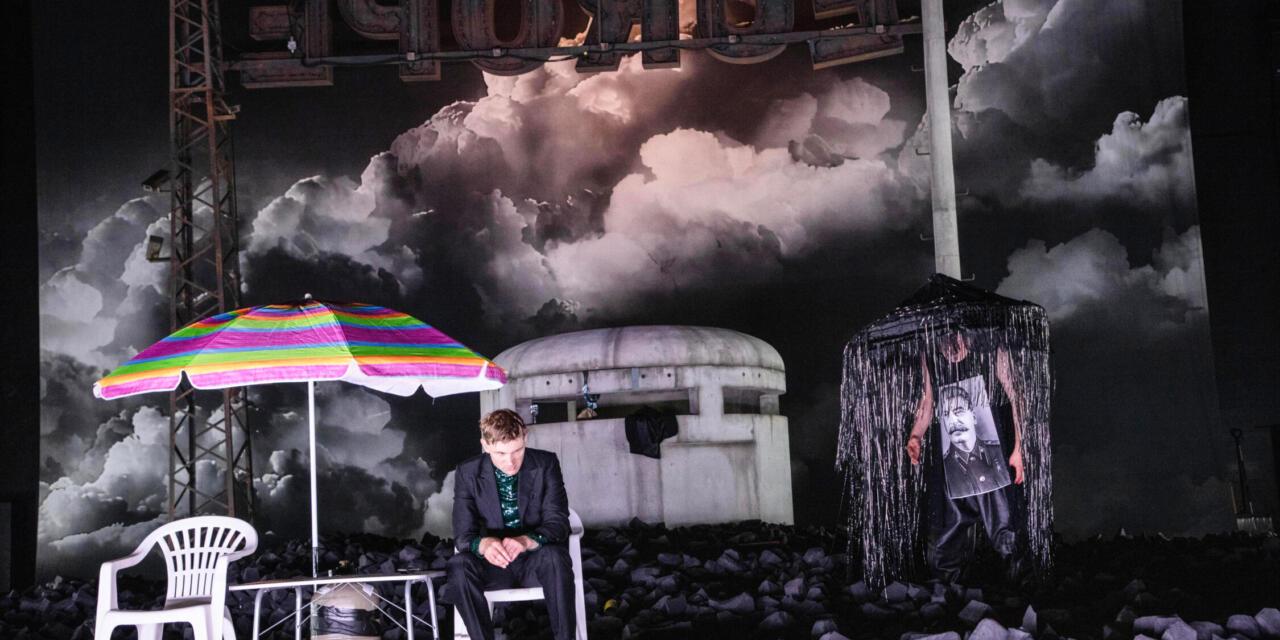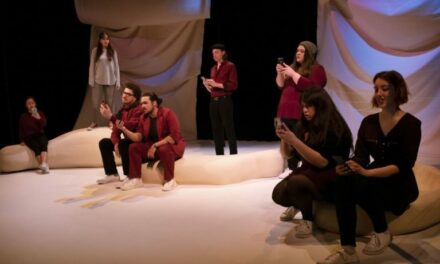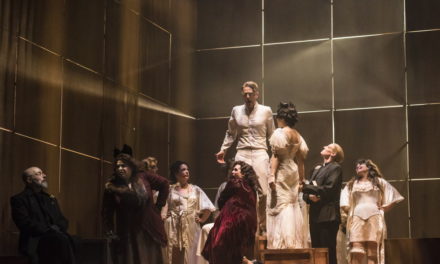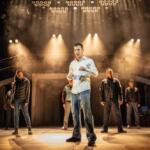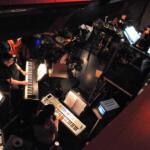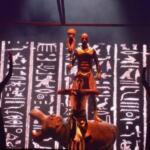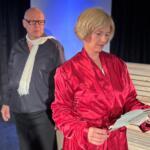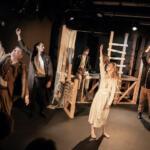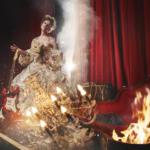This six-hour production of Hamlet took Shakespeare’s play as the starting and end point, in the German version by Heiner Müller, with additional material from Müller’s Hamletmaschine, further Müller texts, as well as excerpts from The Divine Comedy by Dante, texts by Artaud, and other material external to Shakespeare. A pub quiz of literature or theatre specialists would most likely reveal more sources. The structure of the evening resembled that of the great Indian epic of The Mahabharata: a discernible core plot (provided by Shakespeare’s text) with numerous associative loops of apparent digressions. Thematically, many of those centred on the theatre as form and institution, in a self-reflexive manner. Textually, actors addressed each other by their real first names instead of the names of the characters they were playing. There were references to the director, his directorial approach, his professional practices and habits, as well as aspects of his private life (six children from five women). At times, actors imitated his way of talking.
For prolonged periods of the six hours duration, live cameras projected live video of action, otherwise not visible on the stage onto a screen lowered from the ceiling for that purpose. With reference to earlier Castorf productions, where such video was relayed to the then latest technology in the shape of numerous bulky small screen TV monitors, some of those relics of technology had been placed at the back of the stage, showing mainly the white snow for which such monitors were well known. The space thus presented on video here was that of a concrete air raid shelter underground — only its look-out top was part of the set, looming towards the back of the stage in front of a backdrop with projected storm clouds. A narrow spiral staircase led down to the functional shelter space with some seats and cots with thin, dirty mattresses.
In terms of the acting, the amount of energy actors were expected, by the production, to invest, and which they did invest, was considerable indeed, bordering on the extreme. They roared (as distinct from spoke or even shouted) many of their numerous lines, their voices amplified only in the video sequences.
For the audience, this production proved to be an endurance test. The performance was sold out, but there was a steady trickle of spectators leaving mid-performance, while quite a number did not return after the interval. Cast and spectators were exhausted and relieved at the end, each in their own right and on their own terms. The brevity of this review is therefore also a tongue-in-cheek response to the experience.
This post was written by the author in their personal capacity.The opinions expressed in this article are the author’s own and do not reflect the view of The Theatre Times, their staff or collaborators.

